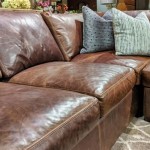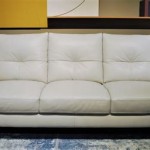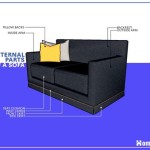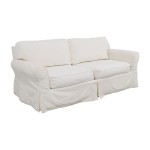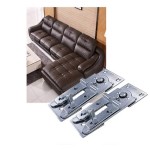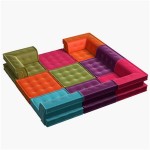Sectional Sofa Recliner Repair Parts: A Comprehensive Guide
Sectional sofas with reclining features offer a blend of comfort and versatility, making them a popular choice for contemporary living spaces. However, like any mechanical furniture, recliner sectionals are susceptible to wear and tear over time. Addressing issues promptly with the appropriate repair parts is crucial for maintaining functionality and extending the lifespan of these valuable pieces of furniture. This article provides a detailed overview of sectional sofa recliner repair parts, common problems, and considerations for sourcing and replacing components.
Understanding the Anatomy of a Sectional Recliner
Before embarking on any repair, it is essential to understand the key components that constitute a reclining sectional sofa. A recliner mechanism is a complex system of interconnected parts working in unison to provide smooth and reliable operation. Identifying the specific component requiring replacement is the first step toward a successful repair. Common parts include:
- Recliner Mechanisms: This is the core of the reclining function, often constructed from heavy-duty steel. It enables the chair to move between upright, partially reclined, and fully reclined positions.
- Cables and Actuators: These components connect the handle or power button to the recliner mechanism. Cables typically operate manual recliners, while actuators are used in power recliners to convert electrical energy into mechanical motion.
- Handles and Levers: These are the user interface for manual recliners, allowing individuals to engage and disengage the reclining mechanism.
- Power Recliner Motors: Power recliners rely on electric motors to drive the reclining mechanism. These motors convert electrical power into the rotational force needed for movement.
- Transformers and Power Supplies: These components convert standard household voltage to the lower voltage required by the power recliner's motor.
- Recliner Springs: Springs are used to assist in the reclining and returning motion, providing tension and support.
- Linkage Bars and Rivets: These connect various parts of the recliner mechanism, enabling coordinated movement.
- Upholstery and Padding: While not strictly mechanical, damaged upholstery or worn padding can significantly impact the comfort and appearance of the recliner.
- Footrests: Often, footrests are a separate component of the recliner mechanism, deploying and retracting in coordination with the backrest.
- Frame Components: The wooden or metal frame provides the structural foundation for the recliner. Weakened or broken frame components compromise the overall stability of the sofa.
Common Recliner Problems and Their Corresponding Parts
Several issues can arise with reclining sectionals, each requiring specific replacement parts. Recognizing the symptoms and linking them to potential faulty components is crucial for efficient repair. Here are some common problems and their likely causes:
Difficulty Reclining or Returning to Upright Position: This can be caused by several factors. If the recliner is manual, a frayed or broken cable is a likely culprit. The cable might be stretched, preventing it from properly engaging the release lever on the recliner mechanism. In power recliners, a faulty motor, transformer, or wiring issue could be preventing the mechanism from functioning correctly. Additionally, worn or broken springs can impede smooth movement. A jammed recliner mechanism due to debris or damaged linkage bars can also cause this issue.
Noisy Operation: Squeaking, grinding, or clicking sounds during reclining can indicate several problems. Worn or dry joints in the recliner mechanism may require lubrication or replacement. Loose linkage bars or rivets can also cause noise. In power recliners, a failing motor can produce unusual sounds. Additionally, debris trapped within the mechanism can generate noise during movement.
Recliner Sticking or Jerky Movement: This often points to problems within the recliner mechanism itself. Bent or damaged linkage bars can cause binding, leading to jerky movement. Debris or obstructions within the mechanism can also impede smooth operation. In power recliners, a malfunctioning motor might deliver uneven power, resulting in jerky movement.
Broken Handle or Lever: These are common points of failure, particularly on manual recliners. The handle itself can crack or break, or the connecting hardware can become loose or detached. Replacement handles are typically readily available and relatively simple to install.
Power Recliner Not Working: This issue requires systematic troubleshooting. First, check the power cord and outlet to ensure they are functioning correctly. If the power supply is receiving power, the transformer might be faulty. Use a multimeter to test the transformer's output voltage. If the transformer is functioning, the motor could be the problem. Testing the motor directly with a known voltage source can help determine if it is operational. Also inspect wiring and connections for damage or loose connections.
Sagging or Uncomfortable Seating: While not directly related to the recliner mechanism, deteriorated upholstery and padding can significantly impact comfort. Replacing worn-out foam or sagging springs within the seat cushion can restore support and comfort.
Broken Frame: Damage to the wooden or metal frame of the sectional sofa can compromise the structural integrity of the recliner. These repairs may require professional assistance, depending on the extent of the damage. Replacement frame components may be difficult to source and may require custom fabrication.
Sourcing Sectional Sofa Recliner Repair Parts
Finding the correct replacement parts is crucial for a successful repair. Several options are available, each with its own advantages and disadvantages.
Original Manufacturer: Contacting the sectional sofa's manufacturer is often the best option, especially if the sofa is relatively new. They can provide exact replacement parts that are guaranteed to fit and function correctly. However, this option may be more expensive and may not be feasible for older or discontinued models.
Furniture Repair Shops: Local furniture repair shops often stock common recliner parts or can order them from their suppliers. They can also provide professional repair services if needed. The cost may be higher, but the expertise and convenience can be worthwhile. They also may be able to source alternate parts that work with an older mechanism.
Online Retailers: Numerous online retailers specialize in recliner repair parts. These retailers offer a wide selection of parts at competitive prices. However, it is essential to ensure the compatibility of the parts with the specific recliner model. Carefully review product descriptions and specifications before making a purchase. Checking customer reviews can also provide valuable insights into the quality and reliability of the parts.
Salvage Yards and Used Furniture Stores: Salvage yards and used furniture stores can be a source of inexpensive replacement parts, particularly for older or discontinued models. However, the availability of specific parts is unpredictable, and the condition of the parts may vary. Thorough inspection is essential before purchasing used parts.
Generic Replacement Parts: In some cases, generic replacement parts can be used, particularly for common components like cables, handles, and springs. However, it is crucial to ensure that the generic parts are compatible with the recliner mechanism and meet the required specifications. Substituting incompatible parts can damage the mechanism or compromise its functionality. For example, generic cables need to be the correct length and have the correct type of end fittings. Springs need to have the appropriate tension and dimensions.
When sourcing parts, it is essential to have the model number of the sectional sofa and the recliner mechanism. This information can typically be found on a label attached to the sofa or the mechanism itself. Clear photographs of the broken part can also be helpful when searching for replacements.
Considerations for Replacing Recliner Parts
Replacing recliner parts can range from simple tasks to complex procedures requiring specialized tools and knowledge. Consider the following factors before attempting a repair:
Skill Level: Evaluate one's mechanical aptitude and experience with furniture repair. Simple tasks like replacing a handle or cable can often be accomplished by homeowners with basic tools. However, more complex repairs, such as replacing a recliner mechanism or motor, may require professional assistance.
Tool Requirements: Ensure access to the necessary tools. This may include screwdrivers, pliers, wrenches, wire strippers, a multimeter, and safety glasses. Specialized tools, such as spring compressors, may be required for certain repairs.
Safety Precautions: Safety should be the top priority. Disconnect the power supply before working on power recliners. Wear safety glasses to protect eyes from flying debris. Use caution when handling springs, as they can be under tension. Enlist assistance when lifting or moving heavy components.
Compatibility: Verify the compatibility of replacement parts with the specific recliner model. Incompatible parts can damage the mechanism or compromise its functionality. Compare the dimensions, specifications, and mounting points of the replacement part with the original part.
Warranty: If the sectional sofa is still under warranty, attempting a repair oneself may void the warranty. Contact the manufacturer or retailer to determine the warranty coverage and authorized repair options.
Professional Assistance: If unsure about any aspect of the repair process, seek professional assistance from a qualified furniture repair technician. Attempting repairs beyond one's skill level can result in further damage to the recliner or personal injury.
Documentation: Before disassembling the recliner, take photographs or videos of the mechanism and its components. This documentation can be helpful when reassembling the unit. Label any disconnected wires or cables to ensure proper reconnection.
Correctly identifying the broken part and sourcing a compatible replacement is only half the battle. The repair itself must be performed with care and precision, following any manufacturer instructions or consulting online resources. If the repair seems daunting or beyond one's skill level, professional help is always a viable option to avoid further damage and ensure the recliner is functioning safely and correctly.

Order Replacement Parts Recliner Franklin Corporation

Recliner Sofa Chair Repair The Man
Fletcher 6 Piece Fabric Reclining Sectional Costco
Westerly 6 Piece Fabric Power Reclining Sectional With Headrests Costco
Trower 5 Piece Fabric Power Reclining Sectional With Headrests Costco

All Furniture Services Mechanisms Parts Sleeper Recliner Repair

Top Manufacturers And Suppliers Of Recliner Mechanism Parts In The Usa

Types Of Sectionals How To Pick The Best Sectional For Your Needs Theater Seat

Vena 6 Piece Power Reclining Sectional Living Rooms Slumberland
Woodston Fabric Power Reclining Sectional With Headrests Costco


